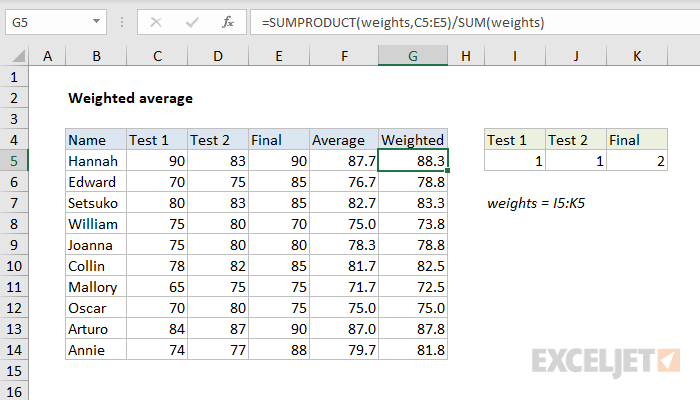

#WEIGHTED AVERAGE METHOD MAP FULL#
Data coverage may not be complete because of special circumstances affecting the collection and reporting of data, such as problems stemming from conflicts.Ĭonsiderable effort has been made to standardize the data, but full comparability cannot be assured, so care must be taken in interpreting the indicators. Delays in reporting data and the use of old surveys as the basis for current estimates may further compromise the quality of data reported. Data relevant at the national level may not be suitable for standardized inter- national use due to methodological concerns or the lack of clear documentation. Statistical systems in many of the poorest countries are limited statistical methods, coverage, practices, and definitions differ widely and cross-country and intertemporal comparisons involve complex technical and conceptual problems that cannot be resolved unequivocally. Many factors affect data availability, reliability, and comparability. Data availability, reliability, and comparability Additional documentation and metadata are available in the World Development Indicators database. Other statistical procedures and calculations are described in the About the data sections following each theme page. It also describes the World Bank Atlas method for deriving the conversion factor used to estimate gross national income (GNI) and GNI per capita in U.S. It covers data consistency, reliability, comparability, reporting standards of key indicators, and the methods employed for calculating regional and income group aggregates and for calculating growth rates. This section describes some of the statistical practices and procedures used in preparing World Development Indicators. Java is a registered trademark of Oracle and/or its affiliates.As a major user of development data, the World Bank recognizes the importance of data documentation to inform users of the methods and conventions used by primary data collectors- usually national statistical agencies, central banks, and customs services-and by international organizations, which compile the statistics that appear in the World Development Indicators database. For details, see the Google Developers Site Policies.
#WEIGHTED AVERAGE METHOD MAP CODE#
Higher as a result of decreasing the weight of cloudy pixels.Įxcept as otherwise noted, the content of this page is licensed under the Creative Commons Attribution 4.0 License, and code samples are licensed under the Apache 2.0 License. The result indicates that the estimated mean NDVI is Observe that cloudWeight needs to be added as a band prior to calling Observe the difference as a result of weighting by cloudiness. Var weighted = ndvi.reduceRegion(reducer.splitWeights(), region, 30) Var unweighted = lect().reduceRegion(reducer, region, 30) Define an arbitrary region in a cloudy area. Var ndvi = image.normalizedDifference().addBands(cloudWeight) Compute NDVI and add the cloud weight band. Var cloudWeight = ee.Image(100).subtract(Įe.(image).select()) weight (100) is for the least cloudy pixels. Compute cloud score and reverse it such that the highest Normalized Difference Vegetation Index (NDVI) in a region, with the weights given byĬloud score (the cloudier, the lower the weight):Ĭode Editor (JavaScript) // Load an input Landsat 8 image. Theįollowing example illustrates splitWeights() by computing the weighted mean SplitWeights() takes two inputs, where the second input is the weight. In order to obtain an explicitly weighted output, it is preferable to set the weightsĮxplicitly with splitWeights() called on the reducer. Of one as a result of calling unweighted() on the reducer. The difference in results is due to pixels at the edge of the region receiving a weight Observe the difference between weighted and unweighted reductions. Compute the UN-weighted mean of the NDWI image clipped to the region. Compute the weighted mean of the NDWI image clipped to the region. Code Editor (JavaScript) // Load a Landsat 8 input image.


 0 kommentar(er)
0 kommentar(er)
